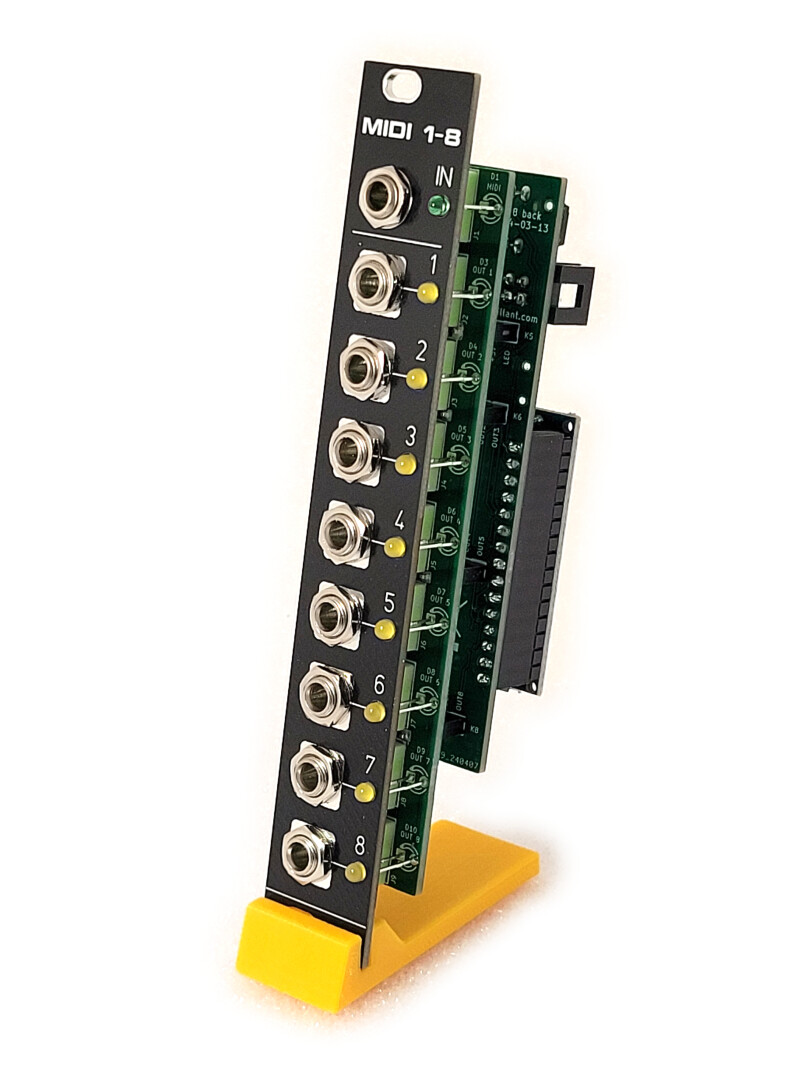
MIDI 1-to-8 is a MIDI/TRS 1 input to 8 outputs splitter/through for Eurorack.
Overview
The MIDI 1-to-8 module is a compact and advanced MIDI splitter/through built around an Arduino Nano micro controller. It features open-source firmware, allowing for complete customization and flexibility through various sketches (programs).
This module can actively filter and process MIDI messages, making it a powerful tool for complex MIDI setups.
Key Features
- 1 Input, 8 Outputs: Splits and filters MIDI input messages into eight independent MIDI outputs.
- Based on Arduino Nano and open source firmware: you have the control.
- Low latency: below 1 ms
- TRS connectors type A, following MIDI/TRS standard.
- Compact Design: Only 4HP wide, designed for easy integration into Eurorack systems.
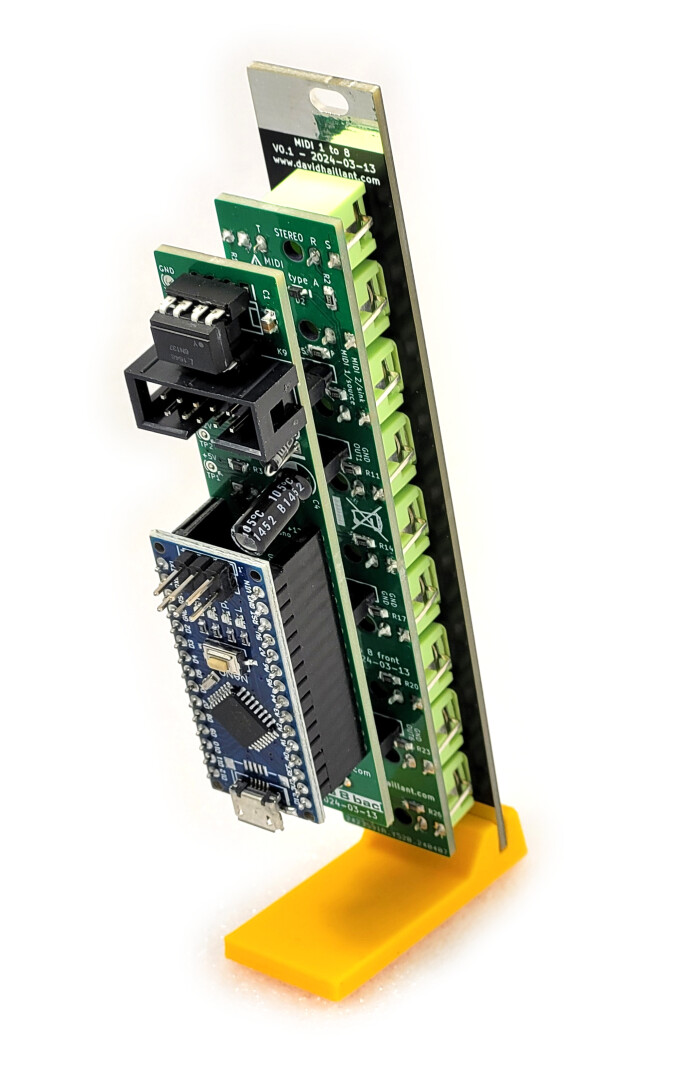
How to use
The MIDI 1-to-8 module is a DIY module. You need to upload a sketch (Arduino code) into the micro controller.
The sketches can be edited and uploaded using the Arduino IDE.
To upload a Sketch:
- Disconnect the module from the bus.
- Connect the Arduino Nano to your computer via USB.
- Open the Arduino IDE with the desired sketch.
- Modify the code if needed, then upload it to the micro controller.
Different demonstration sketches can be found on GitHub: https://github.com/dhaillant/midi1to8.
How does it work
The MIDI 1-to-8 module uses the Arduino Nano to actively process and distribute MIDI signals. Here’s how it works:
- MIDI Input: The incoming MIDI messages are received using the hardware UART interface of the Nano.
- Messages analysis: They are then decoded using the MIDI Library and processed according to the loaded sketch.
Sketches can filter messages by type (e.g., note on/off, control change, program change) or MIDI channel. - MIDI Output: The processed MIDI data is sent to the eight TRS output connectors. Each output can be individually controlled or configured, depending on the sketch.
The circuits
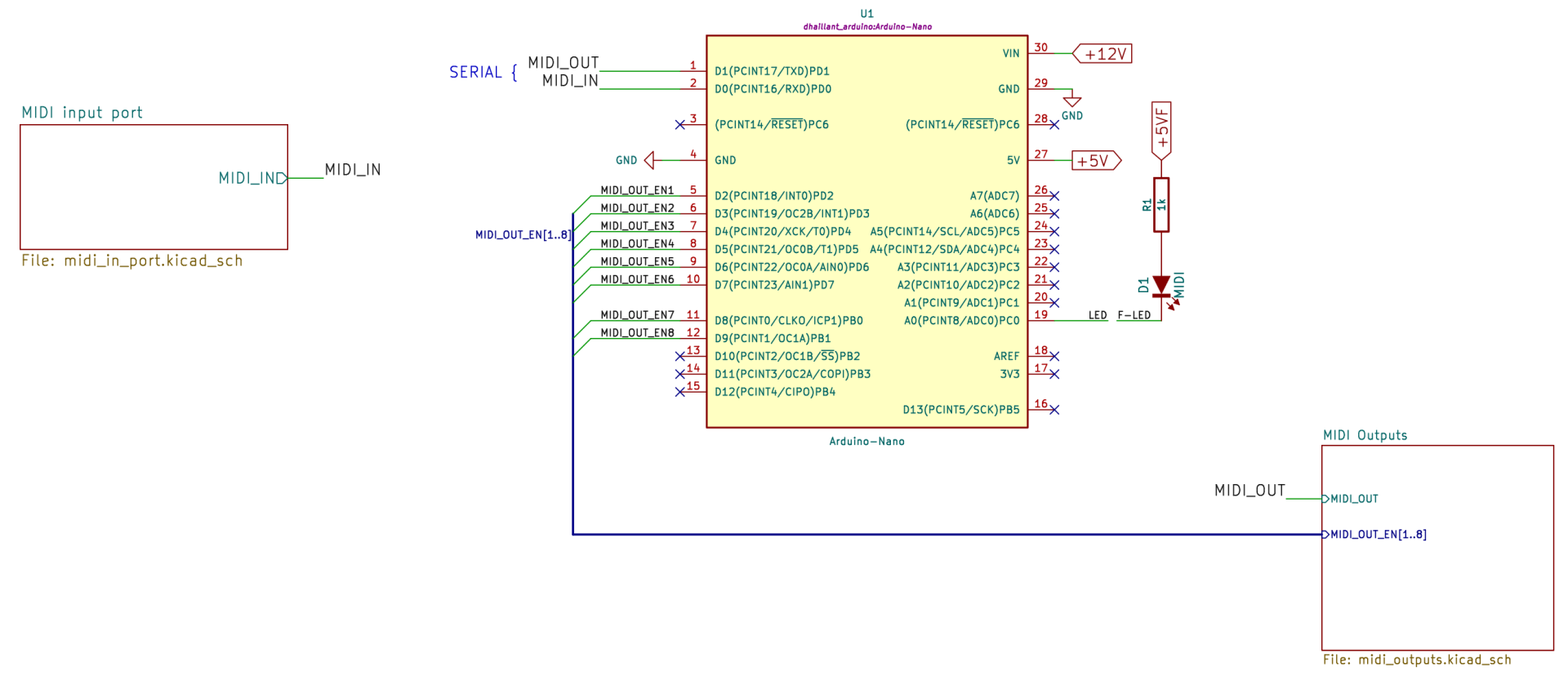
The Arduino Nano is at the heart of the MIDI 1-to-8 module. The MIDI input and output ports are connected to the hardware UART/Serial port (D0 and D1).
The Arduino Nano is powered directly by the +12V rail from the Eurorack bus connector and uses its onboard regulator to provide the +5V rail for the rest of the circuit.
The MIDI activity LED is connected to the A0 output and lights up when the signal is LOW.
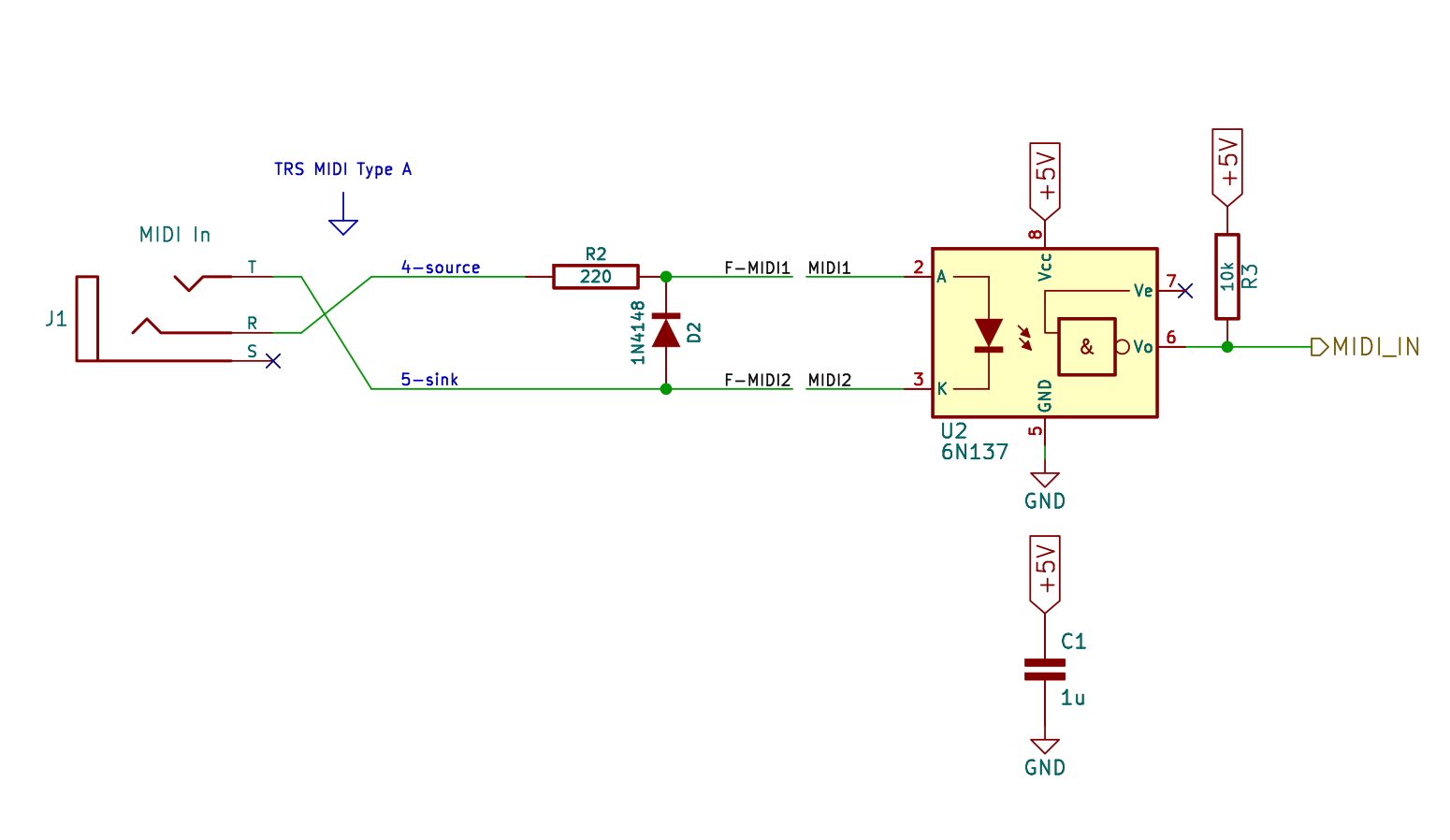
The MIDI input port uses the high-speed optocoupler 6N137 (U2).
R2 and D2 protect the MIDI input against reverse polarities.
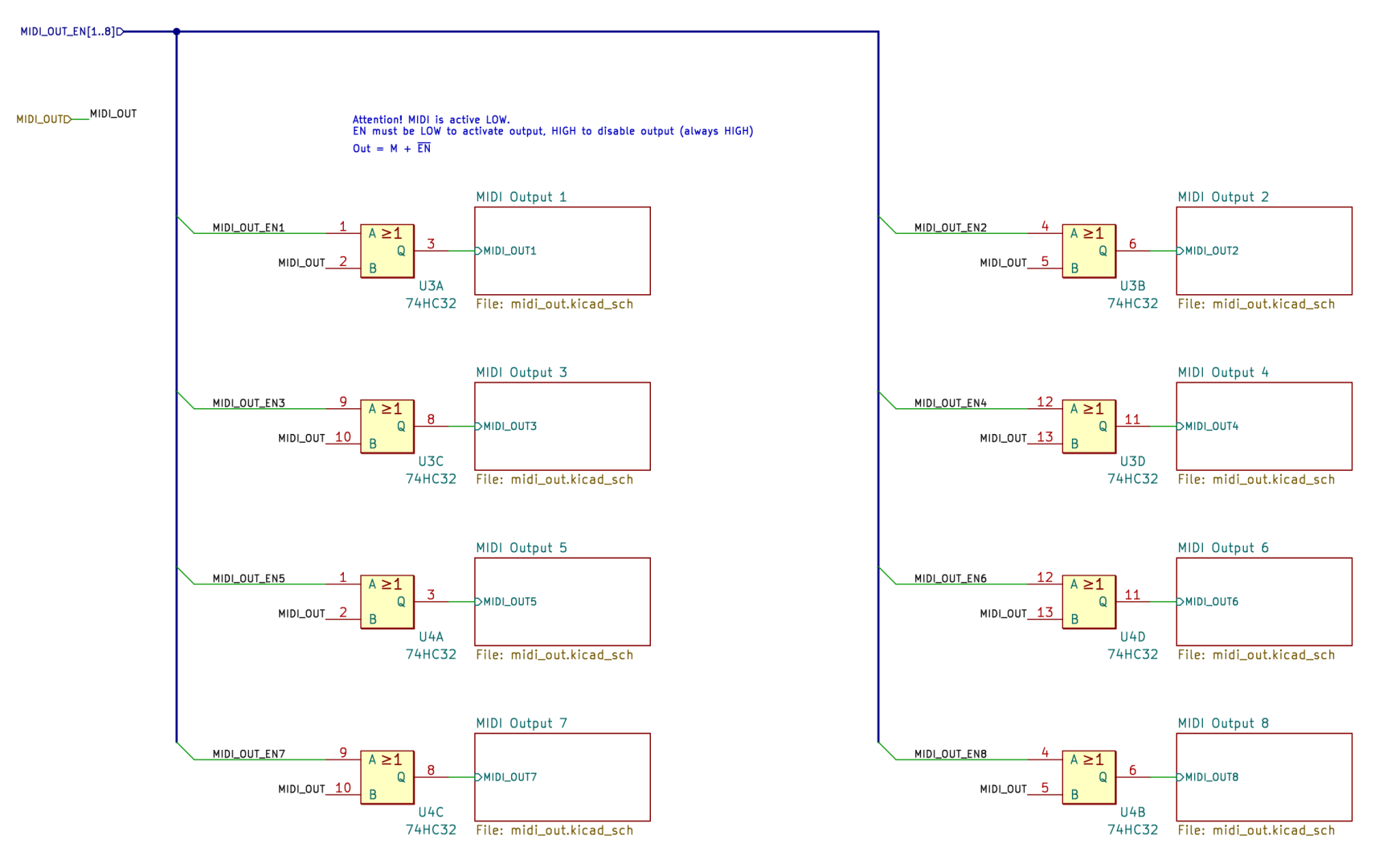
The eight MIDI outputs are all driven by the same hardware serial port of the Arduino Nano. This single signal is then enabled or disabled by eight 74HC32 2-input OR gates.
To be enabled, the ports require that their respective MIDI_OUT_ENx signal be set to LOW.
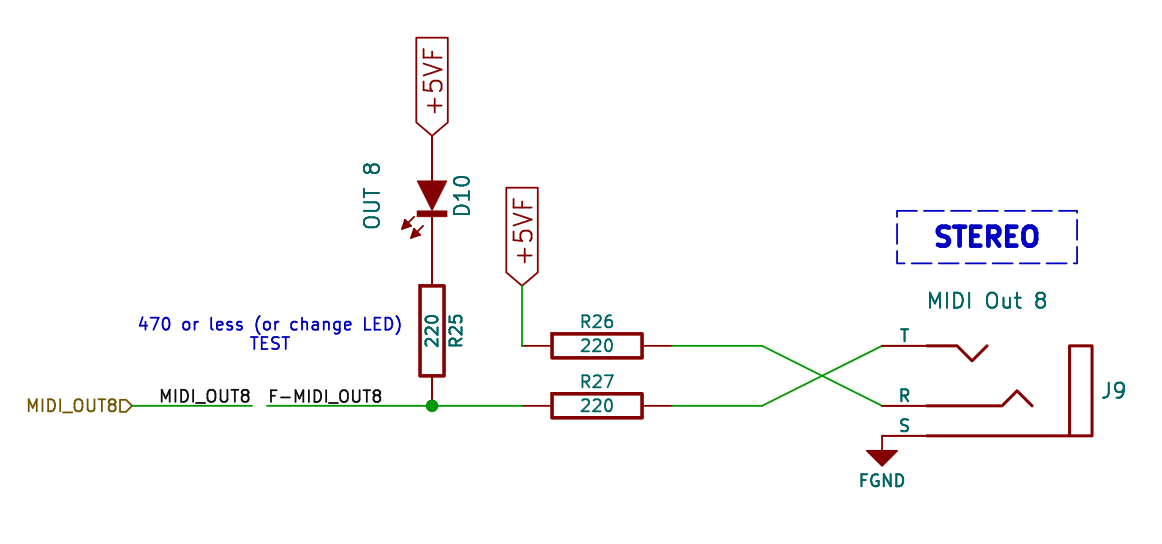
Finally, the output signals are sent to the stereo output jack connectors. Each port features an activity LED (active LOW).
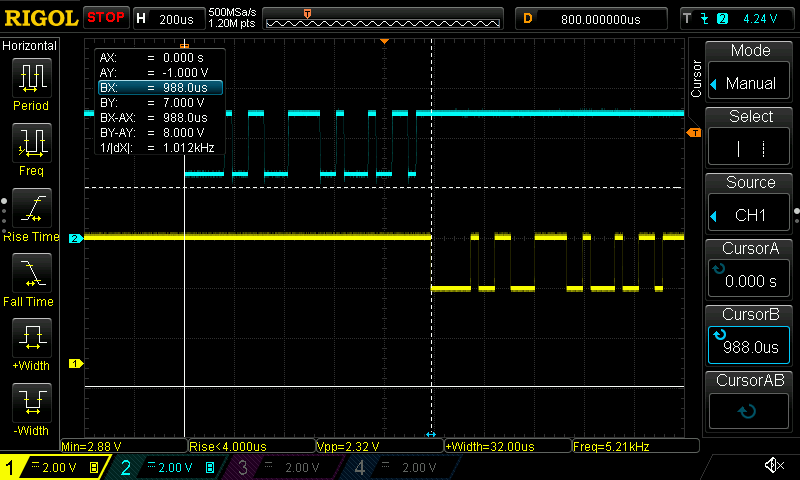
As the module uses the hardware serial port of the Arduino Nano, extremely low latency can be achieved. However, these performance levels depend on two factors:
- The nature of the incoming messages: The output signal can only be generated once the input signal is fully received.
- The type of processing applied:
- If the loaded firmware generates different output messages, these messages will be transmitted sequentially, not simultaneously.
- If the output messages are identical, they will be transmitted simultaneously.
Assembly
I apologize for any inconvenience this may cause.




